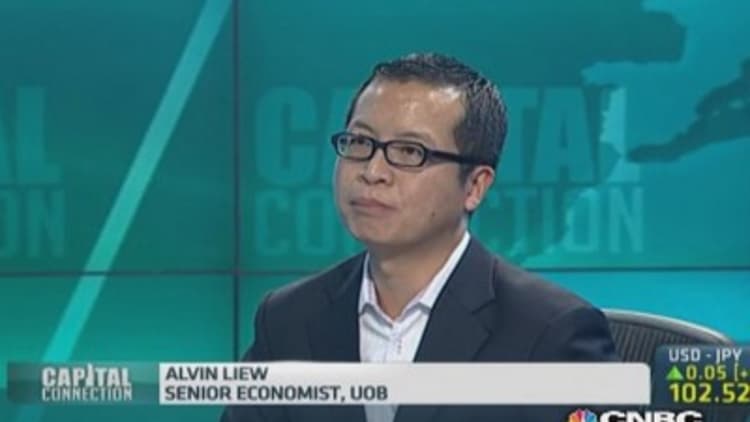The Chinese yuan rose to its strongest level in almost four weeks on Tuesday – a sign its depreciation trend may be a thing of the past, analysts say.
The yuan strengthened to about 6.22 per dollar after the central fixed the currency's daily midpoint stronger than market expectations for a third straight day.
"Unexpectedly low fixings is a strong indication that we have seen the peak in USD/CNY," said Irene Cheung, Asia FX Strategist at ANZ.
Read MoreThe time to bet on a yuan rebound may be near
The PBOC controls yuan trading by fixing a daily midpoint from which it can rise or fall by 2 percent.
The move marks a departure from earlier this year when the People's Bank of China (PBOC) engineered sharp yuan depreciation to shake out speculators betting on one-way appreciation.
"We have been of the view that a resumption of renminbi appreciation would occur over the second half of the year. This could now be earlier than we had anticipated," she added.
Read MoreRussian companies prepare to pay for trade in renminbi
The yuan has risen over 30 percent against the dollar since its landmark revaluation in 2005 but saw first its first period of sustained weakness in the first four months of 2014, falling 3.43 percent against the dollar.
Strong Chinese economic data has compounded ANZ's view that the yuan will resume its appreciation trend.
"Our view was conditioned on a rebound in Chinese economic activity. There are certainly signs that the Chinese economy is stabilizing," added Cheung.
China's trade surplus widened to $35.9 billion in May from $18.5 billion in April, with exports up 7 percent and imports down 1.6 percent. Meanwhile, consumer inflation rose 2.5 percent last month, faster than April's 1.8 percent rise.

Signs of economic stabilization make the PBOC more likely to tolerate a stronger currency, easing concerns sparked by second-quarter growth figures, analysts say. China's economy expanded 7.4 percent on year in the second quarter, down from 7.7 percent in the first.
"It's also important that imports surprised to the downside [in May], partly due to a weaker renminbi. That could have prompted the central bank to act to relieve some pressure there," said Ju Wang, senior Asian FX strategist at HSBC.
Overreaction?
However, Emma Lawson, senior currency strategist at National Australia Bank, told CNBC she's cautious about reading too much into the move.
Read MoreChina's Alibaba to buy 50% stake in Guangzhou Evergrande Football Club
"We've only had a few days of [lower fixings], and we've seen it before back in May, although it wasn't as strong. We need to see a longer period of appreciation before we can identify it as a distinct policy move," she added.
Lawson said it's important to remember that the PBOC long-term intention is to allow the yuan full exposure to market forces; this move could simply be a reflection that the currency can go two ways.
"It's a big shift in direction but it is in line with what the central bank has been saying all along," HSBC's Wang agreed. She noted HSBC had not changed its year-end dollar-yuan forecast of 6.14.
Read MoreChina shadow bankingfears: Overblown or justified?
"China is still a surplus country and its interest rates are relatively attractive compared to other countries like the U.S. This should help boost the currency throughout the second half of the year," she added.
Industry watchers will keep a close eye on the rate yuan appreciation, however. The International Monetary Fund (IMF) recently said Beijing must keep its word on implementing reforms that will correct imbalances, including a "moderately undervalued" yuan.


